Introduction: The Boy from Dunfermline
In 1848, a 12-year-old boy and his family arrived in Allegheny, Pennsylvania, fleeing the crushing poverty of Dunfermline, Scotland. His first job in America was as a bobbin boy in a cotton factory, working 12 hours a day, six days a week, for $1.20 a week. His name was Andrew Carnegie.
Fifty years later, that same man sold his steel company for a sum that would equate to over $372 billion as of 2014, making him the richest man in the world. But what happened next is what truly defined his legacy. He spent the remainder of his life systematically, deliberately, and almost frantically giving it all away. He did not just donate money; he built the foundations of modern American education and culture, believing that “the man who dies rich, dies disgraced.” This is the story of the immigrant who built America’s industrial spine and then dedicated himself to building its mind.
The Early Years: The Telegraph and the Railroad

Carnegie’s early life was a masterclass in seizing opportunity. After the cotton mill, he became a telegraph messenger boy. He quickly learned to decipher telegraph sounds by ear, becoming one of the first operators who could “read” the messages without writing them down. His diligence caught the eye of Thomas Scott, a superintendent of the Pennsylvania Railroad.
Under Scott’s mentorship, Carnegie learned the intricacies of America’s most powerful industry. He made shrewd investments, first in a railroad sleeping car company and then in oil and iron. He understood that connectivity and infrastructure were the future of the nation. But his true moment of clarity came on a trip to England in 1872, where he witnessed the Bessemer process, a new method for mass-producing steel.
The Big Idea: Fueling the Second Industrial Revolution

At the time, America was building outward. Railways, bridges, and skyscrapers were the future, but they were constrained by the limitations of iron. Iron was weak and brittle. Steel was stronger and more flexible, but it was prohibitively expensive to produce.
Carnegie saw his opening. He would bring the Bessemer process to America on a massive scale. His vision was not just to make steel, but to make it so efficiently and cheaply that it would become the fundamental building block of the United States. He founded the Carnegie Steel Company and focused relentlessly on one principle: cost control.
Building the Empire: The Gospel of Efficiency
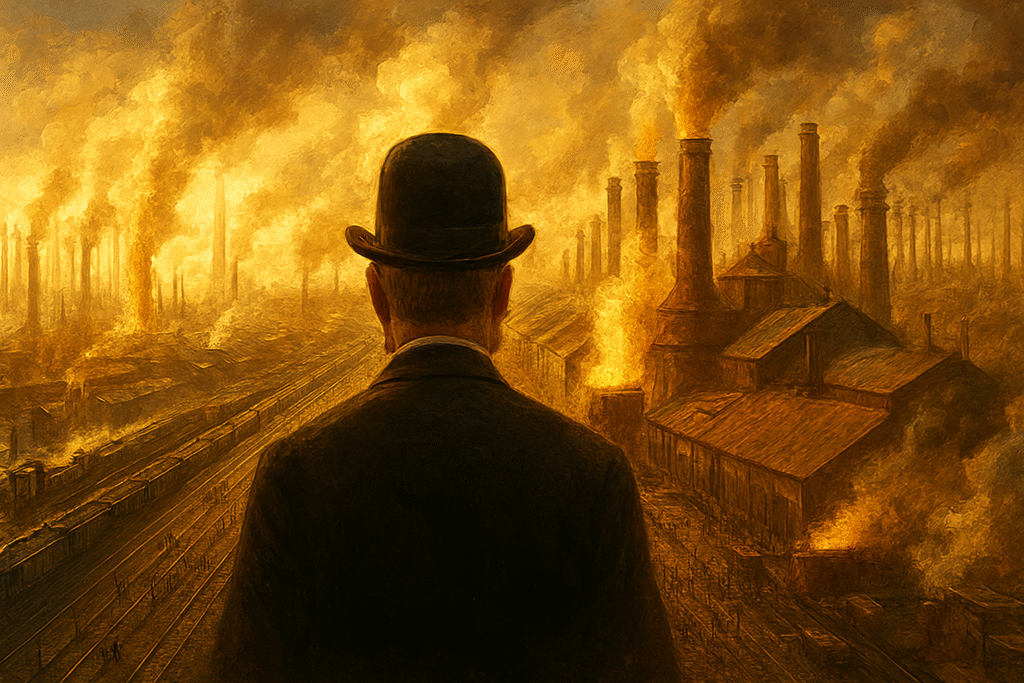
Carnegie was a ruthless competitor, but his weapon was not secret rebates like Rockefeller’s. His weapon was efficiency. He embraced vertical integration, buying up the iron ore mines, the coal fields, and the railroads needed to transport his materials. This allowed him to control every cost from the ground up.
His factories at Homestead, Pennsylvania, became the most productive in the world. He plowed profits back into new technology, constantly driving down the price of steel. Under his leadership, the price of a ton of steel fell from $135 per ton to just $12. He was not just selling steel; he was fueling the entire Second Industrial Revolution, providing the literal framework for cities, railways, and bridges.
The Homestead Strike: The Darkest Chapter
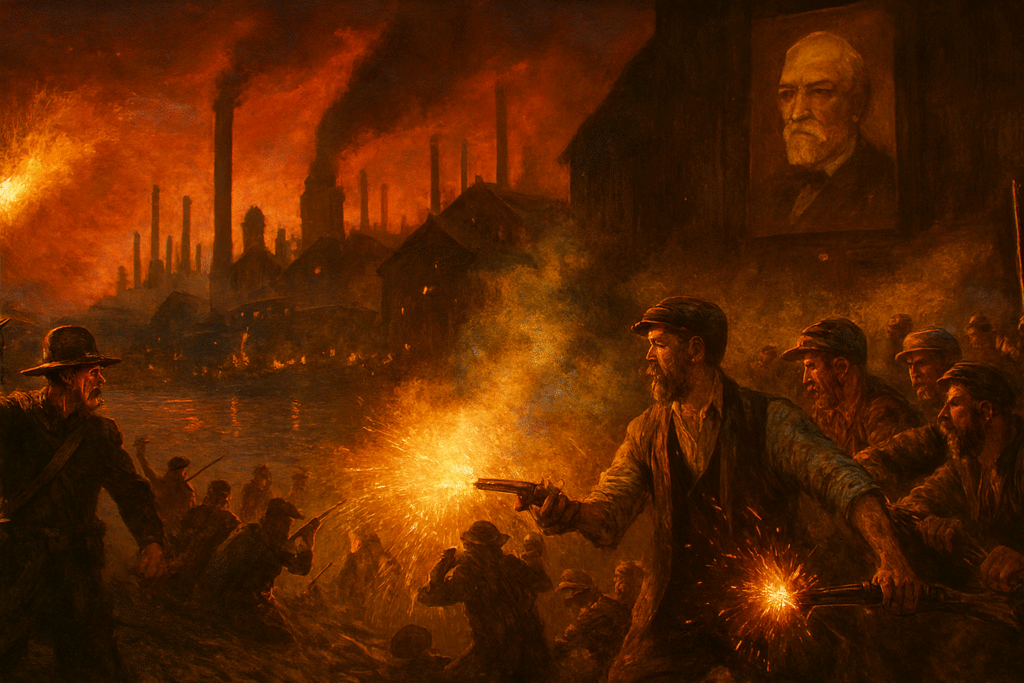
Carnegie’s legacy is not without its profound blemish. In 1892, while he was vacationing in Scotland, his partner, Henry Clay Frick, managed a violent labor dispute at the Homestead steelworks. Frick locked out workers who were protesting wage cuts and brought in Pinkerton detectives to confront them. A bloody battle ensued, leaving at least ten people dead.
The Homestead Strike shattered Carnegie’s public image as a benevolent, pro-labor employer. He had often written sympathetically about workers’ rights, but his absence and Frick’s brutal tactics revealed the harsh reality of his drive for efficiency. The event remains a pivotal moment in American labor history and a permanent stain on his reputation.
The Second Act: The Gospel of Wealth
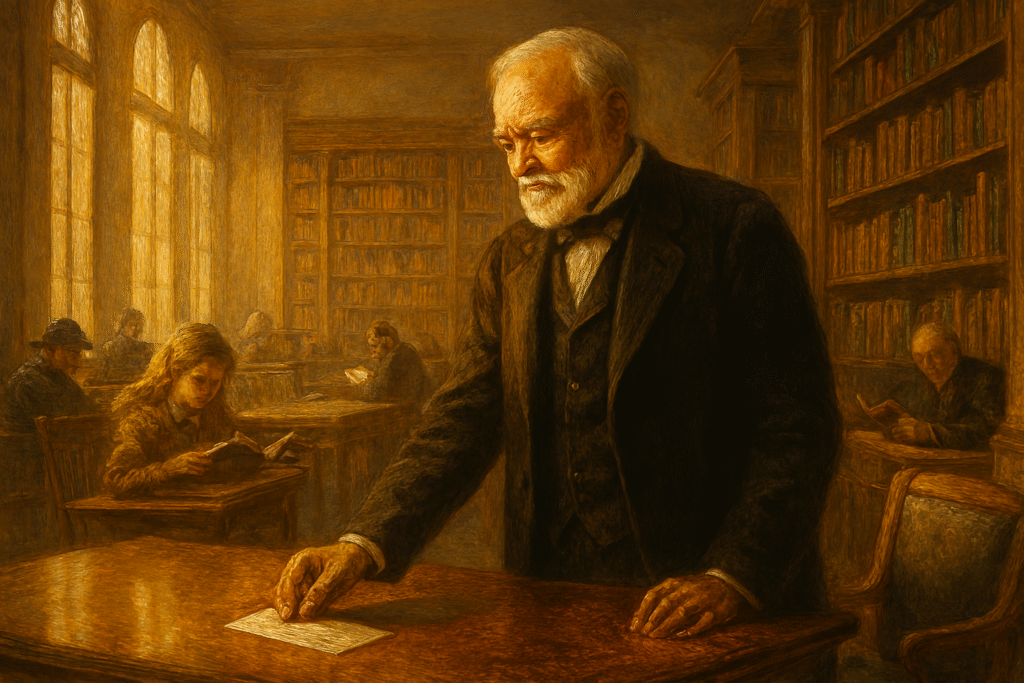
In 1901, at the peak of his power, Carnegie made a stunning decision. He sold Carnegie Steel to banker J.P. Morgan for $480 million, creating the U.S. Steel Corporation. Morgan famously said, “I would like to congratulate you on being the richest man in the world.”
Now, Carnegie turned his immense energy to his second career: philanthropy. He had outlined his philosophy in an essay called “The Gospel of Wealth.” He argued that the wealthy have a moral obligation to use their fortunes to benefit society, not through charity for the helpless, but by providing the “ladders upon which the aspiring can rise.”
He became a systematic, almost obsessive giver. His primary tools were libraries and education.
- Public Libraries: He funded around 3,000 libraries across mostly the English-speaking world, believing a library offered a “treasury of knowledge” free to all. He called them “the best of all gifts.”
- Higher Education: He founded the Carnegie Institute of Technology (now Carnegie Mellon University) to train engineers and scientists.
- The Carnegie Endowment for International Peace: Convinced war was the greatest evil, he established this organization to promote international cooperation and peace, a mission it continues today.
- Hero Funds: He established funds in the U.S. and Europe to recognize civilian heroes and support their families.
By his death in 1919, he had given away over $350 million, roughly 90% of his entire fortune.
Recommended Reading

To further explore the life of this complex titan, these books are highly recommended:
- “Andrew Carnegie” by David Nasaw: Widely considered the definitive biography, offering a comprehensive and balanced look at his life, business, and philanthropy.
- “The Gospel of Wealth” by Andrew Carnegie: The essential primary source. Read his own words to understand his radical philosophy on money and giving.
- “Titan: The Life of John D. Rockefeller, Sr.” by Ron Chernow: While about Rockefeller, it provides brilliant context on the Gilded Age and the other industrial titans Carnegie competed and collaborated with.
Frequently Asked Questions (FAQ)
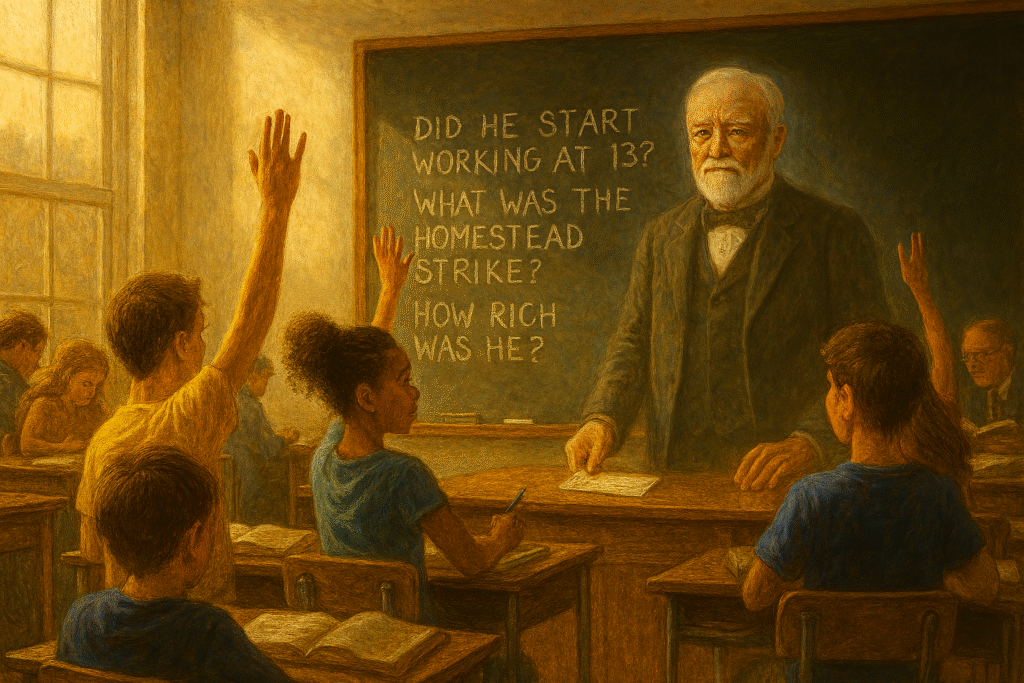
Q1. How did Andrew Carnegie’s philosophy on wealth differ from others?
A: He publicly believed in the “Gospel of Wealth,” which stated that the rich were trustees of their money and should use it to benefit society during their lifetime. This was in stark contrast to simply leaving wealth to heirs or giving as direct handouts.
Q2. Is it true he started working at age 13?
A: Yes. Carnegie’s family was impoverished after the industrial revolution made his father’s handloom weaving business obsolete. They emigrated to the United States for a new start, and he began working immediately to help support the family.
Q3. What was the Homestead Strike, and why was it so significant?
A: It was a violent labor conflict at Carnegie’s Homestead steel mill in 1892. It resulted in multiple deaths and was a major defeat for the steelworkers’ union. It severely damaged Carnegie’s reputation because he publicly supported workers’ rights but was absent during the violent crackdown led by his partner.
Q4. What was the net worth of Andrew Carnegie?
A: At his peak in 1901, his net worth was around $480 million from the sale of his company. In today’s dollars, this is estimated to be well over $372 billion (as of 2014), making him one of the richest individuals in history.
Conclusion: The Lasting Blueprint of a Billionaire
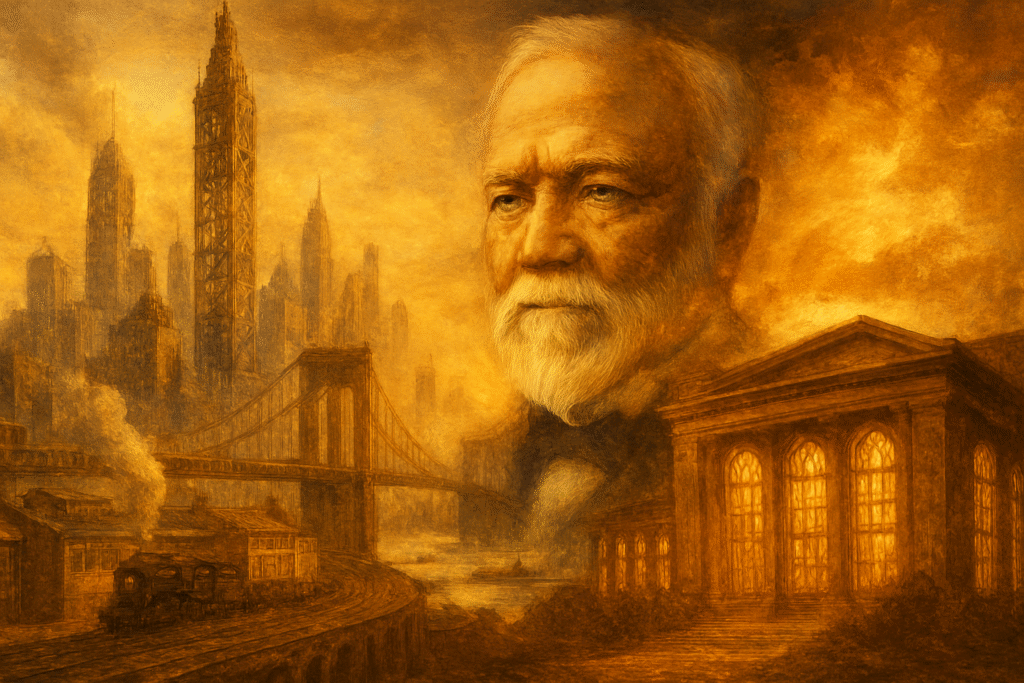
Andrew Carnegie’s life presents a powerful and enduring paradox. He was a ruthless industrialist who drove down costs and crushed unions, yet he was also the visionary philanthropist who believed wealth was a sacred trust to be returned to the people. The skyscrapers and bridges built with his steel symbolize one form of legacy. The thousands of libraries, the universities, and the institutions for peace represent another, perhaps more profound one.
He created the blueprint for the modern philanthropist, followed by figures from Rockefeller to Gates. His story forces us to grapple with a difficult question: can the methods of acquiring great wealth be separated from the good that wealth can ultimately do? There is no simple answer, but the story of the poor Scottish boy who built and then gave away an empire remains one of the most compelling and consequential in the history of business.

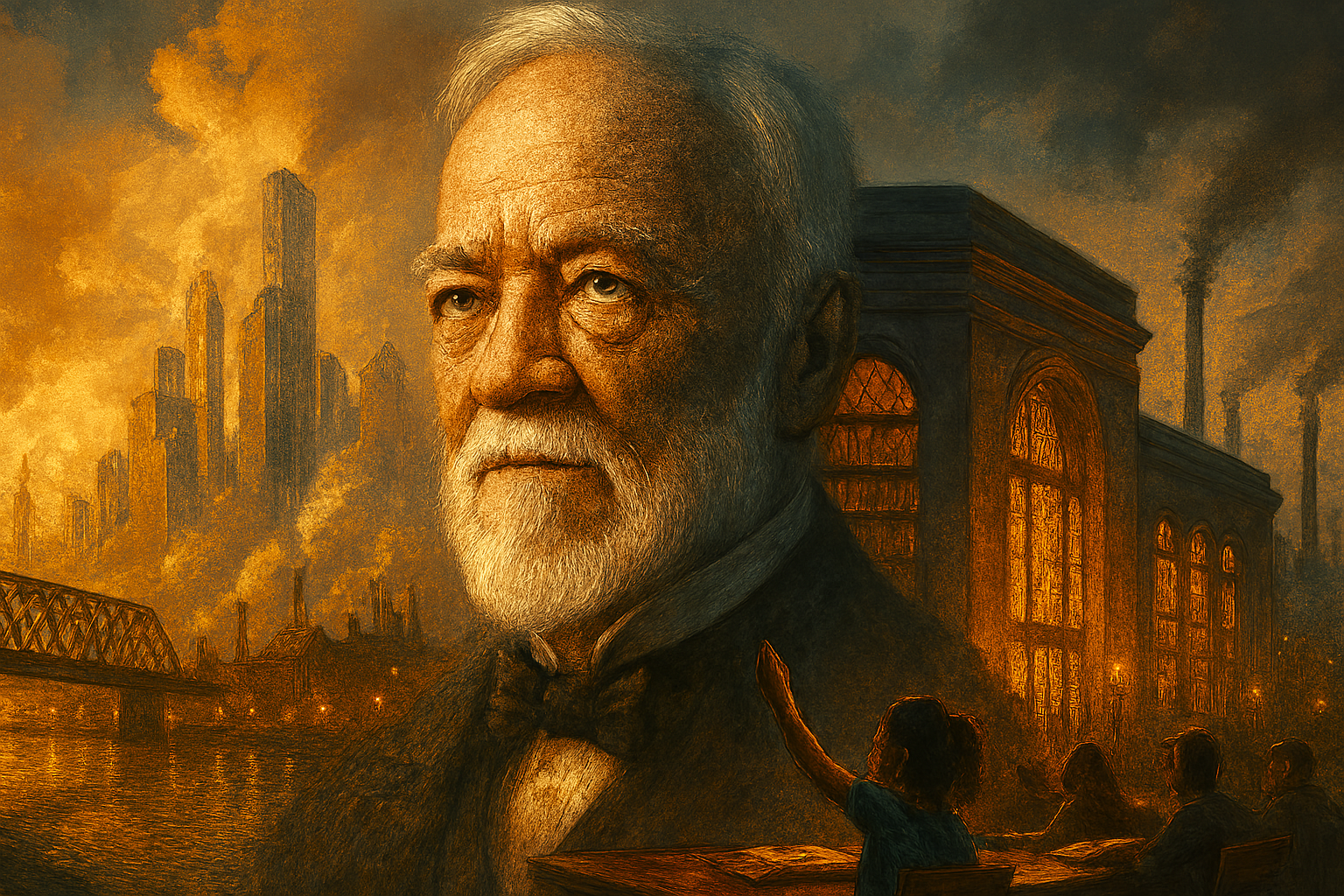

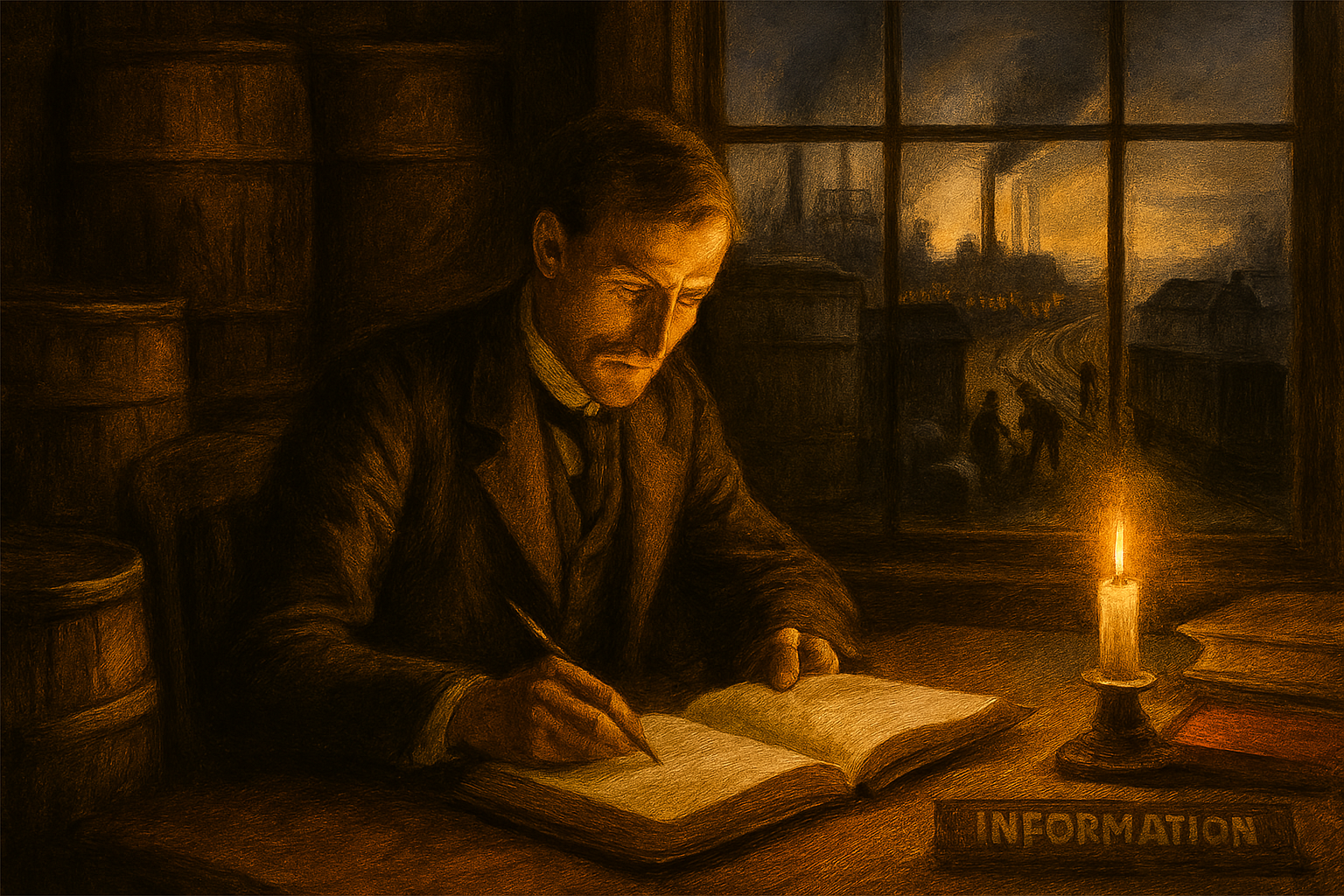







Leave a Reply